
Knowledge
The Major Metal Forming Processes (Part Two)
Metal forming methods are an important part of part design and a matter of great concern to manufacturers. Today, we will take you to explore the major metal forming processes: casting, plastic forming, machining, welding, powder metallurgy, metal injection molding, semi-solid metal forming, and 3D printing.
01 Plastic forming
It is a process method of manufacturing parts with little or no cutting by utilizing the plasticity of materials under the external force of tools and dies. There are many types, mainly including forging, rolling, extrusion, drawing, and stamping.
(1) Forging
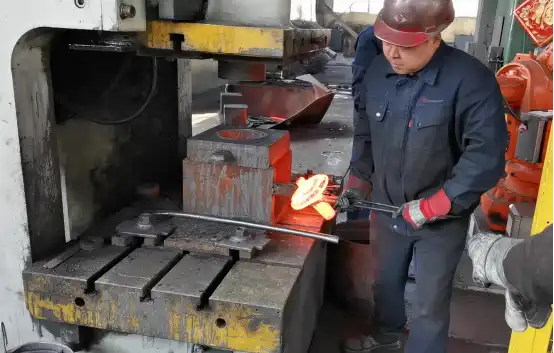
Forging is a processing method that applies pressure to metal billets using forging machinery to cause plastic deformation and obtain forgings with certain mechanical properties, shapes and sizes. According to the forming mechanism, forging can be divided into free forging, die forging, ring rolling and special forging.
Free forging: Generally, it is a processing method that uses simple tools to hammer metal ingots or blocks into the required shape and size on a hammer forge or hydraulic press.
Die forging: It is a forming method that uses dies on a die forging hammer or hot die forging press.
Ring rolling: It refers to the production of ring-shaped parts of different diameters through a dedicated ring rolling machine, and is also used to produce wheel-shaped parts such as car wheels and train wheels.
Special forging: It includes forging methods such as roll forging, cross wedge rolling, radial forging, and liquid die forging. These methods are all relatively suitable for the production of certain special-shaped parts.
Process flow: Heating of forging billet → Roller forging for billet preparation → Die forging → Trimming → Punching → Straightening → Intermediate inspection → Heat treatment of forging → Cleaning → Straightening → Inspection
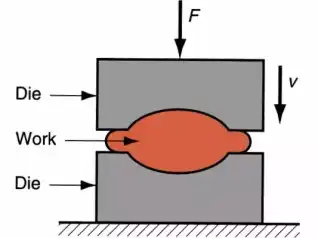
Technical features:
1) The quality of forgings is higher than that of castings, capable of withstanding greater impact forces. Their plasticity, toughness and other mechanical properties are also higher than those of castings and even higher than those of rolled products.
2) It saves raw materials and shortens processing time.
3) High production efficiency.
4) Free forging is suitable for single-piece and small-batch production, with greater flexibility.
Applications: Rollers for large-scale steel rolling mills, herringbone gears, rotors, impellers and retaining rings for steam turbine generator sets, huge hydraulic press working cylinders and columns, locomotive axles, crankshafts and connecting rods for automobiles and tractors, etc.
(2) Rolling:
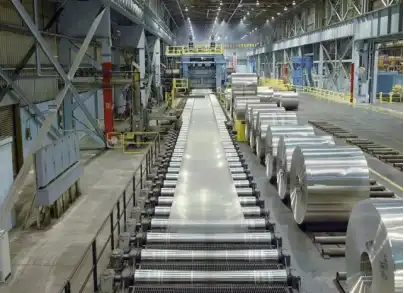
Rolling is a pressure processing method that passes metal billets through the gap between a pair of rotating rolls (of various shapes), and the material is compressed and formed by the rolls, reducing the cross-sectional area and increasing the length.
Rolling classification: According to the movement of the rolled piece, it can be divided into longitudinal rolling, transverse rolling, and oblique rolling.
Longitudinal rolling: It is the process in which the metal passes through between two rolls rotating in opposite directions and undergoes plastic deformation.
Transverse rolling: The movement direction of the rolled piece after deformation is consistent with the axis direction of the rolls.
Oblique rolling: The rolled piece moves in a spiral motion, and the rolled piece is at an angle to the roll axis.
Application: It is mainly used in metal materials such as profiles, plates, and tubes, as well as some non-metallic materials such as plastic products and glass products.
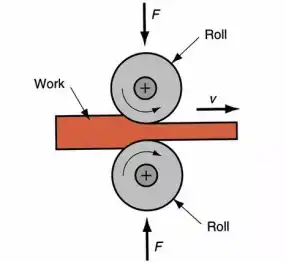
(3) Extrusion
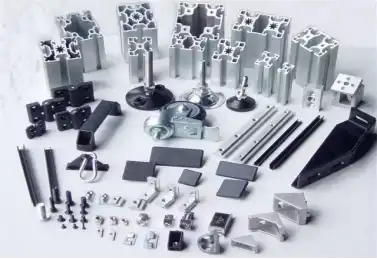
Extrusion: The processing method in which the billet is squeezed out from the hole or gap of the mold under the action of three-directional uneven compressive stress, reducing the cross-sectional area and increasing the length to become the required product is called extrusion. The processing of the billet in this way is called extrusion molding.
Process flow: Preparation before extrusion → Heating of cast billet → Extrusion → Stretching, twisting and straightening → Sawing (to fixed length) → Sampling inspection → Artificial aging → Packaging and storage
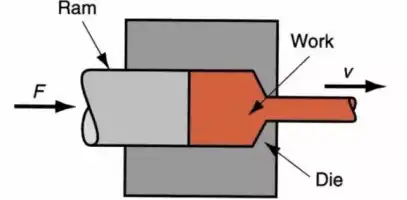
Advantages:
1) Wide production range with various product specifications and types.
2) High production flexibility, suitable for small-batch production.
3) High dimensional accuracy and good surface quality of products.
4) Low equipment investment, small factory area, and easy to achieve automated production.
Disadvantages:
1) Large geometric waste loss;
2) Uneven metal flow;
3) Low extrusion speed and long auxiliary time;
4) High tool wear and high cost. Production application scope: Mainly used for manufacturing long rods, deep holes, thin-walled, and parts with irregular cross-sections.
(4) Drawing
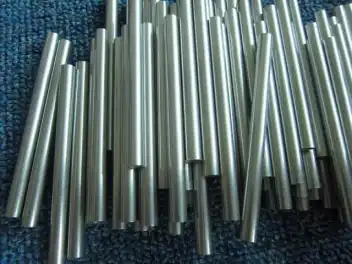
Drawing: It is a plastic processing method in which an external force is applied to the front end of the metal to be drawn, and the metal billet is pulled out from a die hole smaller than the cross-section of the billet to obtain products of the corresponding shape and size.
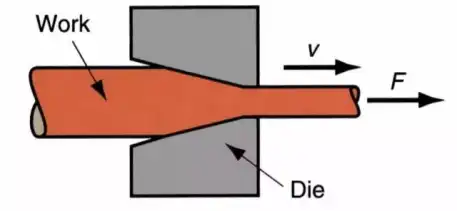
Advantages:
1) Precise dimensions and smooth surface;
2) Simple tools and equipment;
3) Continuous high-speed production of long products with small cross-sections.
Disadvantages:
1) The deformation amount per pass and the total deformation amount between two annealing processes are limited.
2) Length is restricted. Production application scope: Drawing is the main processing method for metal tubes, bars, profiles and wires.
(5) Stamping
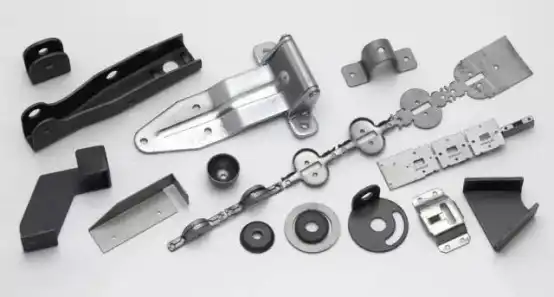
Stamping: It is a forming process that uses a press and dies to apply external force to sheet metal, strip metal, tube, and profile materials, causing plastic deformation or separation, thereby obtaining workpieces (stamping parts) of the desired shape and size.

Technical features:
1) Lightweight and high rigidity products can be obtained.
2) Good productivity, suitable for mass production and low cost.
3) Uniform quality products can be obtained.
4) High material utilization rate, good shearability and recyclability.
The application scope:
Among the steel materials worldwide, 60% to 70% are plates, and most of them are processed into finished products through stamping. The body, chassis, fuel tank, radiator fins of automobiles, the steam drum of boilers, the shell of containers, the silicon steel sheets of the core of motors and electrical appliances, etc. are all stamped. There are also a large number of stamped parts in products such as instruments and meters, household appliances, bicycles, office machinery, and daily utensils.
03 Machining
Machining: It is a processing procedure in the production of parts, where the excess metal layer thickness on the blank is directly removed by cutting tools to meet the technical requirements such as dimensional accuracy, shape and position accuracy, and surface quality as specified in the drawing.
04 Welding
Welding, also known as fusion welding, is a manufacturing process and technique that joins metals or other thermoplastic materials such as plastics by heating, high temperature or high pressure. Types of welding:
05 Powder Metallurgy
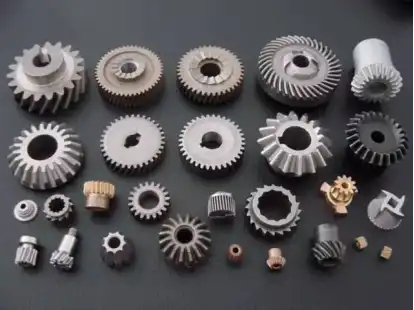
Powder metallurgy: It is a process technology for manufacturing metallic materials, composite materials and various types of products by using metal powder (or a mixture of metal powder and non-metal powder) as raw materials, and through shaping and sintering.
Advantages:
1) The vast majority of refractory metals, their compounds, pseudo-alloys, and porous materials can only be manufactured through powder metallurgy methods.
2) It saves metals and reduces product costs.
3) It does not contaminate the materials in any way and has the potential to produce high-purity materials.
4) Powder metallurgy can ensure the accuracy and uniformity of material composition ratios.
5) Powder metallurgy is suitable for producing products of the same shape in large quantities, which can significantly reduce production costs.
Disadvantages:
1) The size of the parts needs to be considered in the absence of batch production.
2) The cost of molds is relatively higher than that of casting molds.
Production application scope: Powder metallurgy technology can directly produce porous, semi-dense or fully dense materials and products, such as oil-impregnated bearings, gears, cams, guide rods, cutting tools, etc.
06 Metal Injection Molding
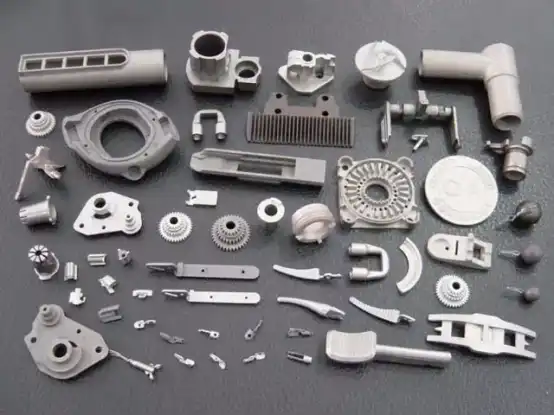
MIM (Metal Injection Molding): It is the abbreviation of Metal Injection Molding. It is a forming method that injects a plasticized mixture of metal powder and binder into a mold. First, the selected powder is mixed with the binder, then the mixture is granulated and injection molded into the desired shape. MIM
The process flow: The MIM process is divided into four unique processing steps (mixing, forming, debinding and sintering) to achieve the production of components. Whether surface treatment is needed is determined based on the product characteristics.
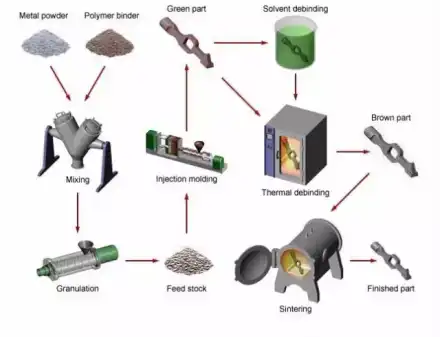
Technical features:
1) One-time forming of complex parts
2) Good surface quality of the finished product, low scrap rate, high production efficiency, and easy to achieve automation
3) Low requirements for mold materials. Technical core: The binder is the core of MIM technology. Only by adding a certain amount of binder can the powder have enhanced fluidity to be suitable for injection molding and maintain the basic shape of the blank.
07 Semi-solid Metal Forming
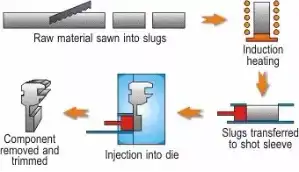
Semi-solid metal forming: It utilizes the unique rheological and thixotropic properties of non-dendritic semi-solid metals (Semi-Solid Metals, abbreviated as SSM) to control the quality of castings.
Semi-solid forming can be classified into rheoforming and thixoforming. (1) Rheoforming (2) Thixoforming
Technical features:
1) Reduces liquid forming defects, significantly improving quality and reliability;
2) The forming temperature is lower than that of full liquid forming, greatly reducing thermal shock to the mold;
3) Can manufacture alloys that cannot be produced by conventional liquid forming methods.
Application: It has been successfully applied in the manufacturing of master cylinders, steering system components, rocker arms, engine pistons, wheel hubs, transmission system components, fuel system components, and air conditioning parts, among others, in aviation, electronics, and consumer goods industries.
08 3D Printing
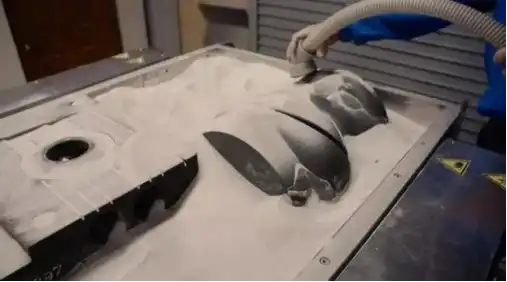
3D printing: It is a type of rapid prototyping technology. Based on digital model files, it uses powdery metals or plastics and other bondable materials to construct objects layer by layer.
Vigor has more than 20 years of experience in the casting, forging, and CNC machining industry, and helps customers to supply the above-related metal parts. If you have any questions, demands, parts developmen,t or improving your supply chain, please feel free to contact us at info@castings-forging.com



